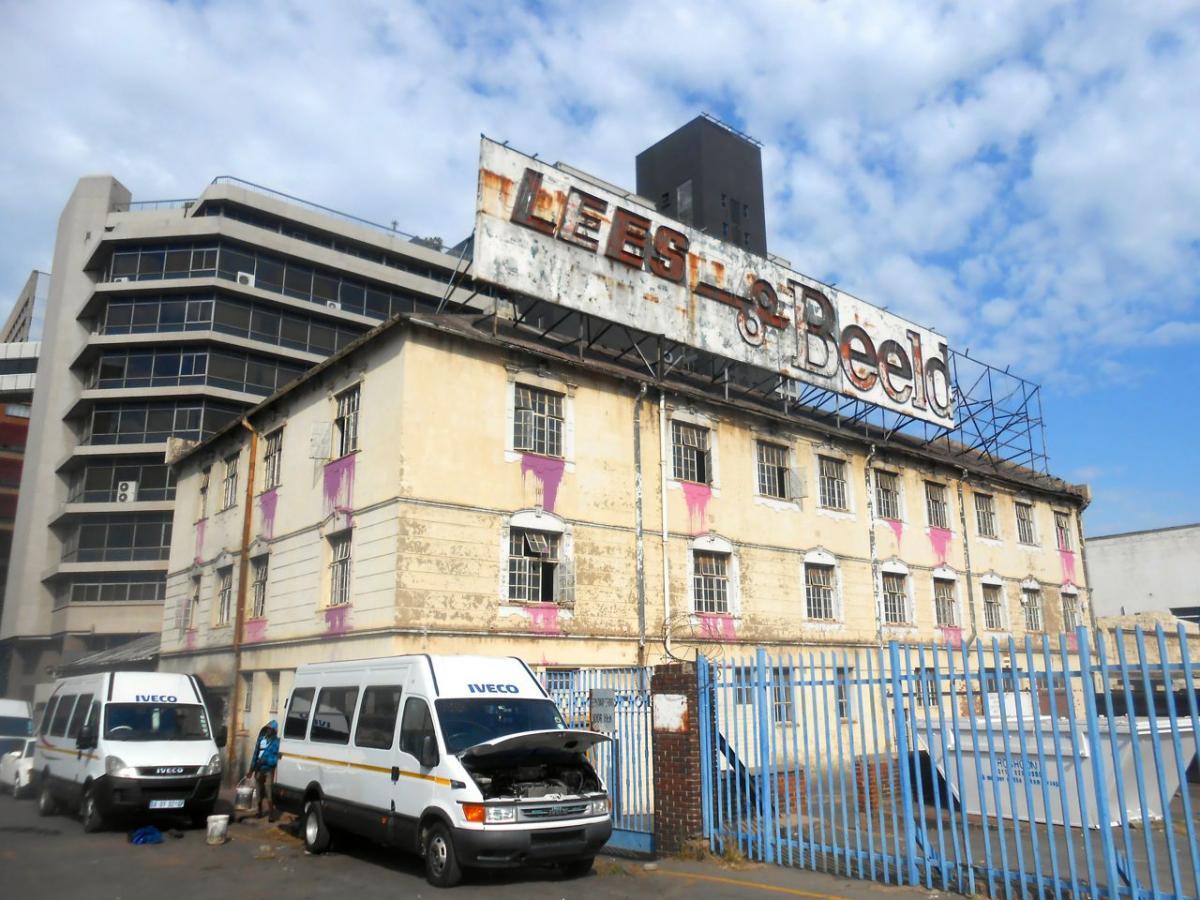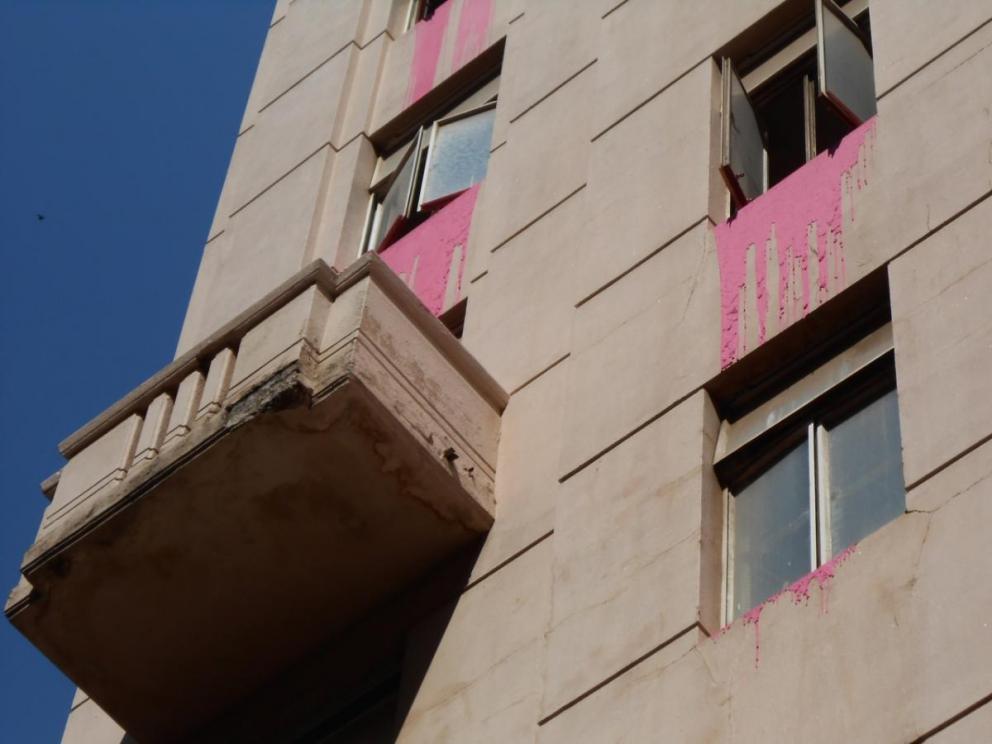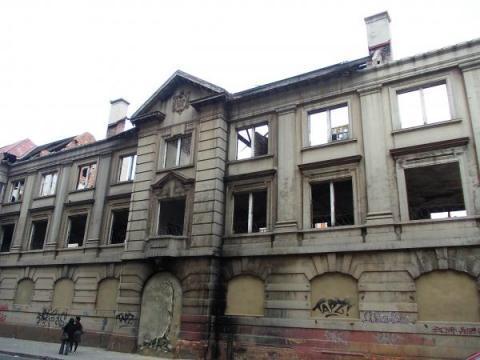
Disclaimer: Any views expressed by individuals and organisations are their own and do not in any way represent the views of The Heritage Portal. If you find any mistakes or historical inaccuracies, please contact the editor.
The following letter has been sent to us by the Egoli Heritage Foundation (EHF). It is a response to the piece 'Painting the Town Pink' written by the team from Urban Joburg and published on 5 September [it appears as though it has been taken down since]. The letter adds nuance to the recent 'Pink Buildings Debate' and adds important analysis on the crisis facing the heritage sector. The final paragraph is worth repeating up front...
"The EHF invites Urban Joburg to join them, not in preserving the old buildings of Johannesburg per se, but to use their expertise to force those who have powers entrusted to them by legislation, to use these to halt the anarchistic state that prevails at present. This would be useful and productive whereas protest, no matter how well-meaning, it may be, usually leads only to more protest, division and frustration."
[Read the response from the Urban Joburg team here]
If there is one positive thing that has crawled out of the woodwork, or more accurately, out from under the wreckage of the damaged pink painted buildings in the city centre, it is that even lawyers – not only heritage aficionadas - care about Johannesburg!
However it seems that love is a many faceted thing. This is borne out by the recent statement of Urban Joburg – led by Professor Thomas Coggin, supported by Professor Marius Pieterse.
In a statement issued by this merry band of academics they claim to support bewareofcolour activism that have admitted responsibility for illegally painting a number of city buildings.
The Egoli Heritage Foundation (EHF) writing earlier on the Heritage Portal damned, with faint praise, the actions of the demonstrators, because it was recognised that though their actions were decidedly wrong-headed and irresponsible, there seemed to be an element of idealism that mitigated the apparent wrong doing. The quite soft approach has been criticized.
Clegg House (The Heritage Portal)
Now the EHF is confronted by a group who support what anonymous demonstrators did when they damaged a number of buildings, notwithstanding that these structures are protected by legislation, namely Section 34 of the National Heritage Resources Act (NHRA). This time, however, it is a duo of law professors who belong to a respected institution, namely the Law Department of the University of the Witwatersrand, who disavow the rule of law and proclaim their support for what is technically a criminal offence, with the words:
Our point of view tends to favour that of bewareofcolour...
There are many more such statements of support for the demonstrators but suffice it to say that in principle (or lack of it) the professors endorse, without reservation, the appropriation of another person’s property. The implication of this, is that because the owners of the pink daubed structures have added to the deterioration of Johannesburg, they and their possessions are fair game.
If this interpretation of what Urban Joburg have implied is correct, then the statement would seem to lack the objectivity that can be expected from men of the calibre of Coggin and Pieterse. It means that the end justifies the means.
The EHF hesitates to enter into a debate on jurisprudence with two professors of law, but questions whether their personal and unorthodox valuation of the structures mitigates breaking the law, or justifies the use of their positions of prestige and authority to further a cause which must be contrary to what they presumably teach their students about the rule of law.
Not only is the Urban Joburg’s statement subjective and expedient, it elevates what the authors believe above the law. It is also ill informed and demonstrates the correctness of what they allege to be true about themselves, namely that
We do not have a particularly refined understanding of architectural value. We however, would argue that the city and its spaces are more important than the building itself…
What the authors fail to understand is that buildings define spaces and lend ambience to places that would otherwise be devoid of character.
Roads and streets would be featureless footpaths or for vehicles were it not for the buildings that, in the best examples, define them and lend them to human scale.
Buildings are what make places and the streets leading off them, different. They characterise and make Johannesburg, London, New York, Soweto, or for that matter any place in the world, different, recognizable and memorable.
The words quoted above regarding the Professors’ modest belief in their architectural prowess goes on to explain the reason for their belief that buildings are expendable. They claim:
…because the building acts as a tool of exclusion: it is closed off to a city in dire need of affordable accommodation; it sits empty in the hope it will one day attract a high price tag; and, importantly, it serves the interests purely of one collective being – it’s owner.
This cannot mean that all buildings should be ‘open’, because buildings respond to human needs and these include privacy and community.
Therefore, the first part of the quotation must be intended to be non-specific: it refers to all cities and spaces being more important than buildings and the second half of the quotation refers to buildings that stand empty in the city centre, but even so Urban Joburg seem to conflate the decay of the city with the problem of housing the homeless. Homelessness is a social, economic and political problem that should not be trivialized and needs to be confronted, not as a kneejerk reaction when the manifestation of the problem is seen to be the problem itself.
Not only do the professors trivialize the problems of homeless, they appear to deride those people who value old buildings and strive to protect them.
The EHF cherishes buildings, not because they are old, but because they symbolise the history of a city. They make that history less abstract and more tangible. The Preamble to the National Heritage Resources Act encapsulates why heritage conservation of buildings and places goes so much further than merely a love of old things: It explains why the conservation of culturally significant artifacts is so important:
“This legislation aims to promote good management of the national estate, and to enable and encourage communities to nurture and conserve their legacy so that it may be bequeathed to future generations. Our heritage is unique and precious and it cannot be renewed. It helps us to define our cultural identity and therefore lies at the heart of our spiritual well-being and has the power to build our nation. It has the potential to affirm our diverse cultures, and in so doing shape our national character.
Our heritage celebrates our achievements and contributes to redressing past inequities. It educates, it deepens our understanding of society and encourages us to empathise with the experience of others. It facilitates healing and material and symbolic restitution and it promotes new and previously neglected research into our rich oral traditions and customs.”
The EHF rejected the painting of a number of city buildings because it was destructive of property and against the law, but muted its criticism of what it believed to be the actions of immature and idealistic perpetrators, but it shares most of the reasons for demonstrating against the lack of attention to real problems that exist within the system.
There are sufficient checks and balances in place to ensure that our city works efficiently, but it does not function properly!
The demonstrators, and it seems Urban Joburg, have latched on to one of the problems that confronts Johannesburg. This is the neglect and decay of old buildings which happen to be protected by legislation, but this is purely a symptom of a much greater malaise confronting civil society in post-apartheid South Africa.
The reality is that:
- Social services are not able to deal with the root causes of poverty - unemployment, health and lack of education;
- In the face of this local Government is dysfunctional.
- By-laws are in place to deal with health, safety and traffic but the authorities do not have the will or capacity to tackle the root causes;
- The NHRA protects old structures and places, but the law is ineffective.
- The Government, at all levels, does not provide the resources to capacitate the heritage authorities to do the work they are required by law to do. As a consequence of this, the government and private individuals by pass the provisions of the NHRA and structures are allowed to remain unoccupied (as in the case of the buildings painted pink) and deteriorate even to a point of destruction. The important point to note is that the NHRA makes such actions ultra vires, but those that offend remain unpunished and benefit by breaking the law.
- The break down in the rule of law leads inevitably to a culture of civil disobedience that has no legal consequences.
Amongst the offenders who escape punishment are:
- The National Government (vide the Marshall Street Barracks)
- The Gauteng Provincial Government (vide the Legislature Building)
- Gauteng Provincial Legislature for not constituting the Heritage Resources Authority (Gauteng (PRHAG) properly in terms of the NHRA and not giving it the funds to do what it was established to do;
- Organisations that were once government but are now run as independent organisations such as the old Johannesburg Station and Jeppe Street Post Office that neglect their heritage resources;
- Property owners like those who moth balled the buildings that were daubed with paint. They thumb their noses at the NHRA.
- The police and public prosecutors who, notwithstanding that prima facie offences have been committed, refuse to prosecute.
Marshall Street Barracks
Add to this mix, the ever present level of corruption that exists at all levels of society and it should be evident that more than a coat of pink paint is necessary to deal with the problems of the inner city.
That conditions in the city have deteriorated to breaking point is no secret and neither the painting of the buildings, or the support given to this by Urban Joburg, are helpful
What is required is the implementation of the law to ensure that all levels of society and government are prosecuted when they break it. This does not only mean action where heritage buildings are affected, but it requires that municipal by-laws are enforced and that all manner of social ills are addressed.
The government, and the structures already in place, are unlikely to do what is called for, namely to force the authorities to do what the laws require. The heritage lobby does not have the resources to institute court action to force government and private institutions to conform to the law.
The EHF invites Urban Joburg to join them, not in preserving the old buildings of Johannesburg per se, but to use their expertise to force those who have powers entrusted to them by legislation, to use these to halt the anarchistic state that prevails at present. This would be useful and productive whereas protest, no matter how well-meaning, it may be, usually leads only to more protest, division and frustration.
Herbert Prins - Acting Chairman - Egoli Heritage Foundation
Comments will load below. If for any reason none appear click here for some troubleshooting tips. If you would like to post a comment and need instructions click here.


